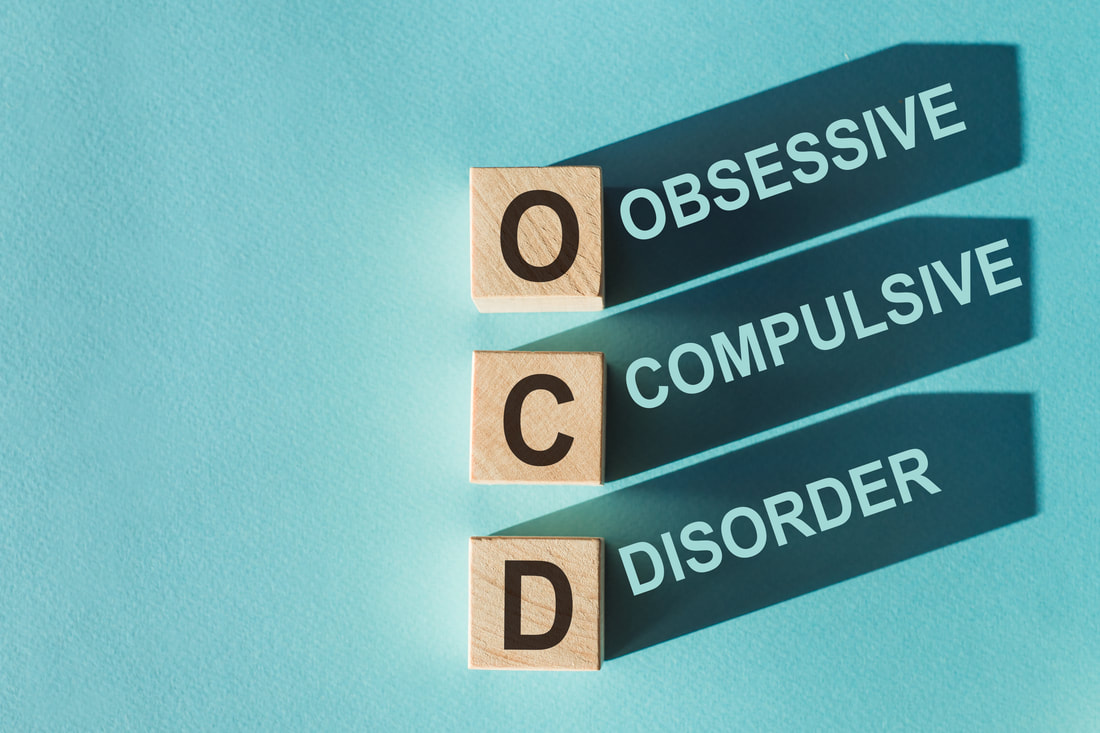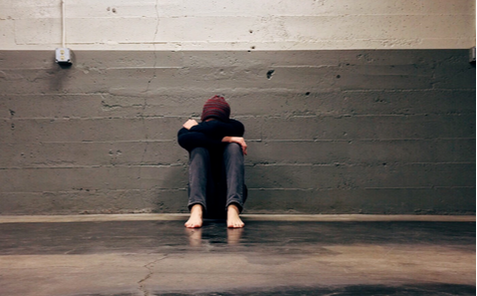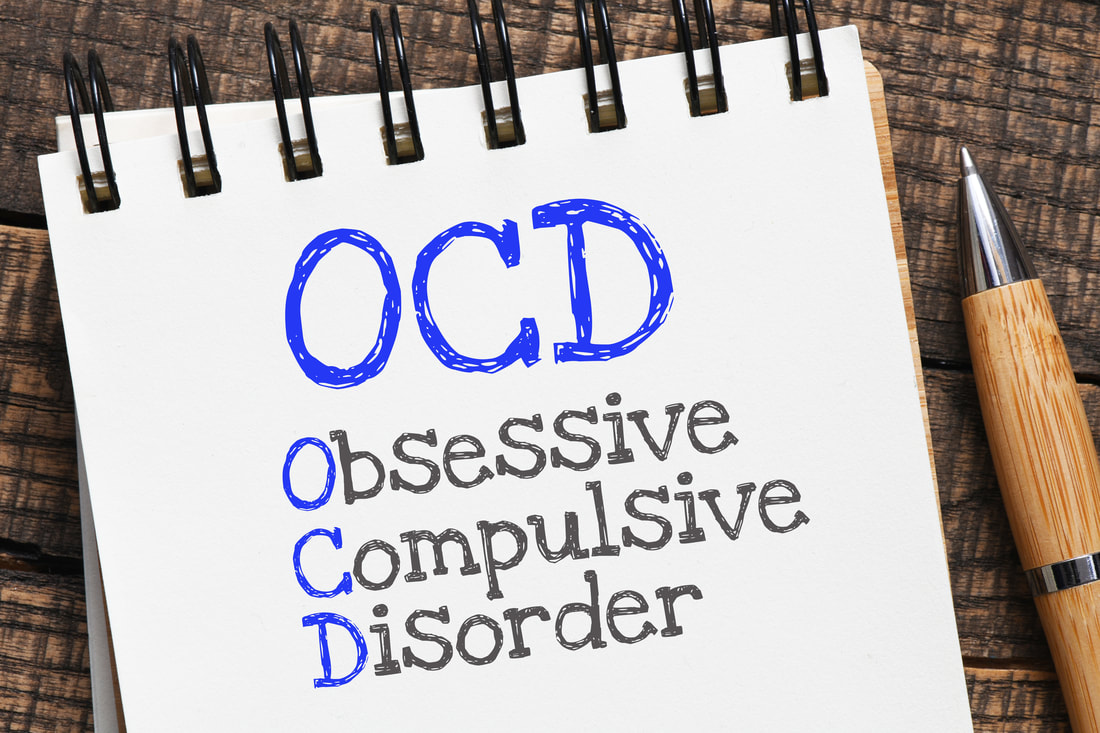Obsessive-Compulsive Disorder (OCD)
|
If you are interested in counseling for OCD, call OakHeart at 630-570-0050 or 779-201-6440 or email us at [email protected]. We have counselors, psychologists, and social workers available to help you at one of our locations in North Aurora, IL, Sycamore, IL, and/or via Telehealth Online Therapy Services serving Kane County, DeKalb County, Dupage County, and beyond.
What is OCD?Obsessive-Compulsive Disorder (OCD) is a disorder characterized by obsessions and compulsions. Obsessions are persistent unwanted thoughts, images, impulses, or doubts that are intrusive and distressing. People with OCD tend to interpret these thoughts, images, or impulses as being dangerous, intolerable, or shameful, and therefore do not want to have them. These obsessions tend to elicit feelings of anxiety, fear, disgust, uncertainty, and frustration. Obsessions are repetitive and intrusive and attempts to suppress the thoughts often only make things worse. Common obsessions include thoughts, images, or impulses related to harming oneself or others; violence; fear of causing harm to others due to making a mistake or neglect (e.g., not wiping up a spill); contamination (e.g., with germs, emotions, radiation); fear of saying something provocative; making a horrible mistake; sex; religion (e.g., fear of blasphemy); morality (e.g., what's right versus wrong); the need for things to be an exact and certain way; feeling like something is incomplete; fear of contracting a serious illness; the need to know, remember, or figure something out; intrusive words or sounds; superstitious fears; fear of having done something horrible in the past; sexual orientation, etc. Compulsions are strong urges to engage in a behavior and/or mental act to try to reduce the frequency of, or distress associated with, the obsessions and/or to try to keep the feared outcome(s) from happening. Although compulsions are technically purposeful behaviors or mental acts, many individuals with OCD feel that they do not have control over the compulsions and might not even realize that they are doing them. Attempts to stop or reduce compulsions often result in intense anxiety and distress. |
Common compulsions include cleaning, washing, and decontaminating; arranging objects in a certain way; checking something over and over again (e.g., stove, outlets, locks, doors); engaging in a behavior over and over again (e.g., touching or tapping something, saying something out loud, re-reading, re-writing, going back to check); the need to tell, ask, or confess; reassurance seeking; mentally repeating certain phrases; doing things in certain numbers or in a specific numerical order; praying; mentally reviewing the past or current events; using only certain colors; cancelling a "bad" thoughts or act with an opposite or "good" thought or act; trying to "figure something out," avoidance of triggers all together, etc.
Individuals with OCD are often plagued by doubt and guilt/shame and feel incredibly uncomfortable with uncertainty. In fact, OCD is also known as the "doubting disease." They are also more likely to assign a great deal of importance to their thoughts or the meaning of their thoughts and to have great difficulty tolerating feeling anxious or distressed.
Individuals with OCD are often plagued by doubt and guilt/shame and feel incredibly uncomfortable with uncertainty. In fact, OCD is also known as the "doubting disease." They are also more likely to assign a great deal of importance to their thoughts or the meaning of their thoughts and to have great difficulty tolerating feeling anxious or distressed.
What is the Treatment for OCD?
We offer specialized gold-standard treatment for Obsessive-Compulsive Disorder using Exposure and Response Prevention (sometimes referred to as ERP or EXRP). The first-line treatment approach for OCD should include ERP, Medication, or both depending on the severity of the symptoms. ERP is a type of Cognitive-Behavioral Therapy (CBT). This treatment includes having individuals confront the things that cause them anxiety and distress (thoughts, images, impulses, external or internal triggers, doubts) and then having the client "response prevent," or in other words stop engaging in, or significantly modify, the compulsions that normally follow the obsessions. This is done in a safe, gradual, systematic way to ensure that individuals are as successful as they can be.
Here is a great summary of ERP: Exposure and Response Prevention from the International OCD Foundation
and on treatment for OCD in general: How is OCD Treated?
Here is a summary written by our very own Dr. Hillary Gorin: Exposure and Response Prevention
To learn more about OCD in general, scroll down below to see our resource list!
If participating in exposures and stopping your compulsions sounds difficult or scary, you are not alone. Your therapist is there to help you and give you tools to help support you and maximize your treatment success. Stopping the cycle of anxiety is a challenging task, but it can be done. We feel strongly that ERP is an effective and safe treatment, and many clients are able to get back to living life without being tormented by their thoughts and controlled by their compulsions.
Treatment typically includes: A thorough diagnostic assessment, a functional assessment, psychoeducation, cognitive therapy, preparing for and conducting various exposures and associated processing of learning, implementing response prevention, and relapse prevention. Client's will also learn coping techniques, learn how to maximize safety learning, and learn how to tolerate feelings of distress and uncertainty/doubt. Family support and parent training are often integrated when appropriate.
We also occasionally incorporate components of mindfulness-based cognitive behavioral approaches such as Acceptance and Commitment Therapy (ACT) and Dialectical Behavioral Therapy (DBT) into the ERP protocol if indicated or requested by our clients.
and on treatment for OCD in general: How is OCD Treated?
Here is a summary written by our very own Dr. Hillary Gorin: Exposure and Response Prevention
To learn more about OCD in general, scroll down below to see our resource list!
If participating in exposures and stopping your compulsions sounds difficult or scary, you are not alone. Your therapist is there to help you and give you tools to help support you and maximize your treatment success. Stopping the cycle of anxiety is a challenging task, but it can be done. We feel strongly that ERP is an effective and safe treatment, and many clients are able to get back to living life without being tormented by their thoughts and controlled by their compulsions.
Treatment typically includes: A thorough diagnostic assessment, a functional assessment, psychoeducation, cognitive therapy, preparing for and conducting various exposures and associated processing of learning, implementing response prevention, and relapse prevention. Client's will also learn coping techniques, learn how to maximize safety learning, and learn how to tolerate feelings of distress and uncertainty/doubt. Family support and parent training are often integrated when appropriate.
We also occasionally incorporate components of mindfulness-based cognitive behavioral approaches such as Acceptance and Commitment Therapy (ACT) and Dialectical Behavioral Therapy (DBT) into the ERP protocol if indicated or requested by our clients.
OakHeart OCD Counselors, Psychologists, and Social Workers
|
|
|
|
|
|
|
|
|
|
OCD Related Blogs:
|
I describe OCD to my patients as having “sticky brain” or “itches” that need to be scratched or something bad will happen. If we look at our diagnostic manual, obsessions are defined as thoughts, images, or impulses that reoccur and are intrusive in a way that causes anxiety/ distress (American Psychiatric Association, 2013). Compulsions are defined as actions or mental acts that take place in response to the obsession. In other words, OCD consists of having an intrusive thought and feeling the urge to undo or prevent the thought from coming true through some sort of mental or physical act...(to read more, click on the link above).
|
|
When most people think about Obsessive-Compulsive Disorder (OCD), they think of the stereotypical symptoms: needing everything to be perfectly organized or “just right” and fear of contamination. While these are valid and common presentations of OCD, there are other types of symptoms that are less often discussed. One of these symptom types is the fear of unacceptable thoughts or repugnant obsessions, which feel incredibly scary and threatening to people with OCD. This type of OCD can cause an immense amount of shame and fear, and I believe we need to discuss it more openly to decrease the shame and give less power to these thoughts...(to read more, click on the link above).
|
|
Thinking errors, also known as cognitive distortions, are basically thinking patterns that can be problematic in that they are often inaccurate, unhelpful, and can be harmful to someone’s mental health. Individuals with Obsessive Compulsive Disorder tend to engage in specific types of thinking errors that we try to target in treatment. Intolerance of Uncertainty: This thinking error is thought to be a hallmark of OCD. Individuals with OCD often feel that they MUST have 100% certainty, that they must eradicate all doubt, and that 100% certainty is possible as long as they figure out a way to achieve that certainty (e.g., checking over and over again, obtaining reassurance from others, body scanning, etc.). Any possible doubt that their fear could be true is considered intolerable and unacceptable...(to read more, click on the link above).
|
|
Exposure and Response Prevention (ERP) is a form of Cognitive Behavioral Therapy. While ERP is usually associated with treatment for OCD specifically, the foundations of the treatment itself can apply to several other disorders, including other anxiety disorders and eating disorders. ERP is considered a gold-standard treatment for OCD. It involves asking clients to either trigger or allow obsessions to exist (this part is called exposure). During the exposure, clients are directed to resist pushing the obsessions away and are discouraged from engaging in compulsions or other forms of avoidance (this part is called response prevention). I am sure this sounds hard and scary, and for someone with OCD, it really can be. For this reason, therapists and clients work collaboratively in a safe environment to develop a gradual, systematic approach. Working together helps to increase the chance that clients are successful and have the best chance at learning safety....(to read more, click on the link above).
|
|
Thought-Action Fusion (TAF) is one of the many kinds of cognitive distortions (errors in thinking or interpreting) that individuals with OCD are more likely to make than individuals without OCD. In fact, I believe it is one of the most central cognitive distortions in OCD and must be properly assessed and targeted in treatment. TAF is an example of a specific kind of attribution of significance related to the meaning we give our thoughts. Specifically, TAF reflects the belief that having a certain thought/image/urge either increases the likelihood of the feared outcome occurring (Likelihood TAF) or that having a certain thought/image/urge is morally equivalent to actually doing what the thought entails (Moral TAF)...(to read more, click on the link above).
|
|
The development of anxiety-based disorders, OCD, and PTSD, as understood at this time, involves complex interactions between genetic and environmental, behavioral, and psychological factors. In this blog, I will discuss a leading theory on one major behavioral/ psychological contribution to the development of and maintenance of these disorders: Avoidance. Unfortunately, avoidance generally prevents overcoming a fear response. Why? Because you can’t see that a feared situation, thought, or memory is actually not harmful until you repeatedly encounter that thing and see that it is not harmful...(to read more, click on the link above).
|
Resources
OCD statistics from the National Institute of Mental Health
Anxiety and Depression Association of America
International OCD Foundation Resources:
OCD General Information
International OCD Foundation
Exposure and Response Prevention
Contamination Fears
"Just Right" OCD
Scrupulosity Fears (Morality and Religion)
Violent and Sexual Obsessions
OCD in Children and Adolescents
Anxiety and Depression Association of America
International OCD Foundation Resources:
OCD General Information
International OCD Foundation
Exposure and Response Prevention
Contamination Fears
"Just Right" OCD
Scrupulosity Fears (Morality and Religion)
Violent and Sexual Obsessions
OCD in Children and Adolescents
References
American Psychiatric Association. (2013). Diagnostic and statistical manual of mental disorders (5th ed.). Washington, DC: Author.

















